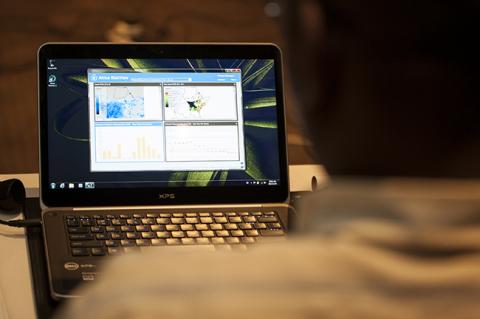The first step to establishing a facility such as ARC is understanding — in dollar terms — Africa’s weather-related food security risk. As the technical engine of the ARC risk pool,
Africa RiskView is a core product of the ARC Agency. For its drought product, it combines existing operational rainfall-based early warning models on agricultural drought in Africa with data on vulnerable populations to form a standardized approach for estimating food insecurity response costs across the continent — information that is critical for financial preparedness for drought and for providing the basic infrastructure needed to establish and manage a parametric risk pool and trigger early disbursements.
In addition to supporting ARC,
Africa RiskView provides decision-makers with expected and probable maximum costs of drought-related responses before an agricultural season begins and as the season progresses for
every first-level administrative district in every country in sub-Saharan Africa. In addition to providing a financial early warning tool, identifying and quantifying risk in this objective way can also help countries and their partners direct appropriate drought response actions and target food security investments.
Africa RiskView is designed to interpret different types of weather data, including rainfall estimates, and information about crops, such as soil and cropping calendars. These data are then converted into meaningful indicators for agricultural production and pasture and applied to the vulnerable populations that depend on rainfall for crops and rangeland for their livelihoods.
Africa RiskView then uses this information to estimate how many people may be directly affected (or have been affected) by drought or deficit rainfall in a given season. Using cost per affected person estimates (see
Methodology),
Africa RiskView estimates how much response costs to the observed drought event may be.

Population affected and response cost estimates can be calculated for the African continent, a region, a specific country or part of a country. Users can customise all aspects of the underlying
Africa RiskView. Countries can also use the tool to select ARC risk transfer parameters to define how much of this modelled drought risk they wish to transfer to the ARC risk pool for each season. See the
How ARC Works to read more about how these participation parameters are defined.
In addition to supporting ARC, the information produced by Africa RiskView has broader applications. It could help to target early food security assessments in specific geographic areas or help with contingency planning and emergency preparedness for future shocks in a country. It can also help to understand better the drivers and causes of food insecurity in an area and therefore inform the best investments or risk management strategies. The tool could also be helpful in guiding planning and investment decisions aimed at enhancing agricultural productivity or market development and be used to support micro insurance programmes. To date the tool focuses on drought, but work is ongoing to include risks due to river flooding and tropical cyclones.
Access to the
Africa RiskView software is free and can be requested on the
software webpage. Access is subject to the terms and conditions set forth in the Software License Agreement. Prospective users employed by national governments or organizations that have entered into a Software License Agreement benefit from the agreement and will be granted access to
Africa RiskView. Prospective users who are not so employed will not be granted access to
Africa RiskView. However, where appropriate, ARC and the relevant organizations can decide to enter in a Software License Agreement. All new registrations to the
Africa RiskView are managed by the
Africa RiskView Support Team.

 Population affected and response cost estimates can be calculated for the African continent, a region, a specific country or part of a country. Users can customise all aspects of the underlying Africa RiskView. Countries can also use the tool to select ARC risk transfer parameters to define how much of this modelled drought risk they wish to transfer to the ARC risk pool for each season. See the How ARC Works to read more about how these participation parameters are defined.
Population affected and response cost estimates can be calculated for the African continent, a region, a specific country or part of a country. Users can customise all aspects of the underlying Africa RiskView. Countries can also use the tool to select ARC risk transfer parameters to define how much of this modelled drought risk they wish to transfer to the ARC risk pool for each season. See the How ARC Works to read more about how these participation parameters are defined.






Comments
arcuser
Fri, 11/11/2016 - 15:43
Permalink
In reply to by arcuser
[…] Africa RiskView: Introduction […]